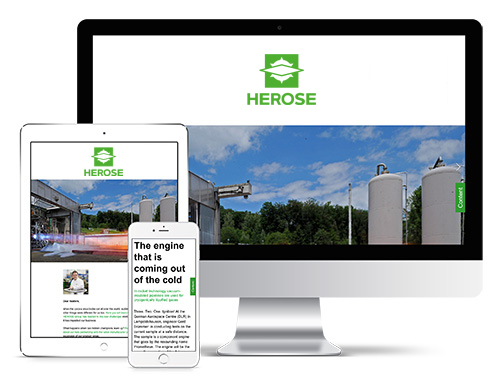The power-to-gas plant in Werlte, Lower Saxony, has been a pioneer in the production of green energy since 2013 and relies on HEROSE valves for methane liquefaction. In autumn 2021, the ship ElbBLUE will sail for the first time with green synthetic LNG – a pioneer on the seas.
The giant leap from 25 kW to 6000 kW
“It all started with a VW Passat that we had fuelled with methane,” says Tolga Akertek, process engineer and current operations manager of the plant. It was through this vehicle that Audi became aware of the start-up of Solarfuel. The pilot plant had an output of 25 kW and could produce one cubic metre of methane in one hour. Audi AG wanted a 6-megawatt plant for the production of green methane. At the end of 2013, after two years of engineering and construction, the plant in Werlte, producing green methane for CO2-neutral mobility, was handed over by Solarfuel to Audi. At the time, it was the first plant of its kind in the world.
Pioneers with experience and many ideas
The power-to-gas plant has a capacity of about 1000 tonnes of gas per year. The e-gas produced was first fed into the natural gas grid. This enabled drivers of Audi CNG vehicles, to reduce their CO2 emissions by 80 % on the balance sheet and well-to-wheel. Since 2018, green hydrogen has also been sold to industrial customers. Through a management buy-out in spring 2021, the former operators now also own the plant, and they have big plans. The latest project is a container plant that produces green synthetic natural gas (LNG) by feeding in CO2 – this can be used in e.g., marine engines and heavy-duty transport.
kiwi AG – as the young company is called – has entered into a cooperation agreement with Alternoil, a pioneer in sustainable heavy goods transport, to operate 40 LNG filling stations in Germany by the end of 2021. At these filling stations, kiwi‘s synthetic LNG from renewable wind energy and bio-LNG from organic residues, will be available. The plant shows that fossil fuels can be directly replaced by synthetic ones – based on wind energy and photovoltaics.
This is how synthetic LNG is manufactured
The green hydrogen produced by electrolysis reacts with the CO2 from the neighbouring waste biogas plant. In a large heat exchanger at minus 150 °C, the gas is cooled down to such an extent that the CO2 becomes solid and freezes out as dry ice. The remaining methane-hydrogen mixture is then cooled until the methane liquefies – 190 HEROSE valves are installed here in the liquefaction. The hydrogen that is left remains gaseous and is returned to the methanation reactor. The plant can produce more than 5 tonnes of synthetic LNG within 24 hours. A 60 cubic metre tank is used for intermediate storage until the tank-trailer filling takes place.
Green power is the foundation
A power-to-gas plant needs electricity from renewable sources as its main input. The electricity could also be obtained in direct connection to wind turbines or solar power plants. The plant in Werlte is connected to the grid and can draw electricity in different ways. Due to its high degree of flexibility – the plant can ramp up from zero to full load within 5 minutes and shut down within seconds – it is an ideal complement to the highly variable wind and solar energy. In the past, when a storm low made the wind turbines rotate on a Friday evening and neither industry nor private households were generating much demand, the price of electricity sometimes slipped into the red. The electricity demand can also serve to stabilise the grids. The energy used in this way is stored in the form of renewable hydrogen or methane.
Synthetic LNG can be used everywhere where up to now fossil LNG has been used.
From Werlte out into the world – synthetic LNG in shipping
For some time now, shipping has had to comply with new environmental regulations: Less sulphur in fuels and lower nitrogen oxide emissions, soot and particulate emissions respectively are also an important issue. This brought LNG into play as a fuel that helps fulfil these requirements. Fossil LNG has already reduced CO2 emissions, but synthetic LNG makes a ship CO2-neutral – for shipping, this is a big step towards maritime climate change.
ElbBLUE has been running on LNG since 2017
The 152-metre container ship MS “ElbBLUE”, formerly MS “Wes Amelie”, has a capacity of 1,000 standard 20-foot containers (TEU) and is underway in feeder traffic from Rotterdam to the Baltic Sea to Finland and Russia. In 2017, the MV “Wes Amelie” was the first ship of its kind in the world to be converted to LNG operation. The engine was converted to a so-called dual fuel engine and a 500 cubic metre LNG tank was installed – the conversion took three months. As a fuel, LNG is a bit more demanding, a lot of things have to be considered. Safety equipment such as double-walled pipes, gas detectors and various emergency shutdowns had to be installed. The crew has undergone special training so that they are allowed to sail with this technology. This type of ship was chosen because there are more than 20 sister ships, and further conversions are to follow.
Switch to synthetic LNG just like that?
“In the long run, we have to decarbonise.” says Rainer Runde, technical project manager of the ship conversion, “Batteries and hydrogen do not work on ships because of the poor energy storage capacity. They are not suitable for the long voyages of ships. Synthetic LNG has a relatively high energy density and is the solution here.” So, together with engine manufacturer MAN, the idea was developed to prove that synthetic LNG can be used in a ship‘s engine. One hurdle so far has been the availability of green-produced synthetic LNG. Thus, a collaboration between the pioneers of production and the pioneers of application was obvious. In Werlte, 20 tonnes of synthetic LNG were produced, brought to Brunsbüttel by lorry – a vehicle powered by LNG – and within about an hour the refuelling process was completed. The green LNG costs about five times as much as fossil. Rainer Runde has just returned from a test drive with the new fuel and is enthusiastic: „We measured the emissions at all load levels of the engine and all expectations were fulfilled.“ During the test, there was a mixture of 50 % fossil LNG and 50 % synthetic LNG in the tank. A drop-in of the synthetic fuel of, for example, 10 to 20 % is also possible for the future – that would then be the beginning of a transition to decarbonisation.
We wanted to show that a ship using fossil LNG can run on synthetic LNG without any further conversion measures.
Rainer Runde, Technical Project Manager for Ship Operations
Quality and reliability for green energy.
Numerous HEROSE products are used in the plant in Werlte for the manufacture of synthetic LNG. For example control valves for the nitrogen supply at the heat exchangers, also at the nitrogen plant itself or for transferring the completed synthetic LNG into the large storage tank. HEROSE products are also used on numerous ships that run on LNG.
Photo at the top: Peter Eggermann – Adobe Stock


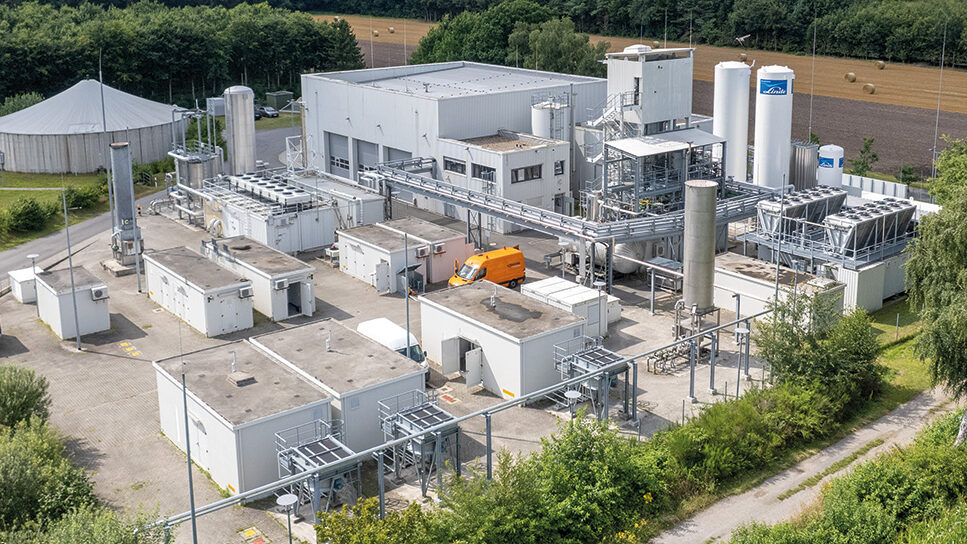
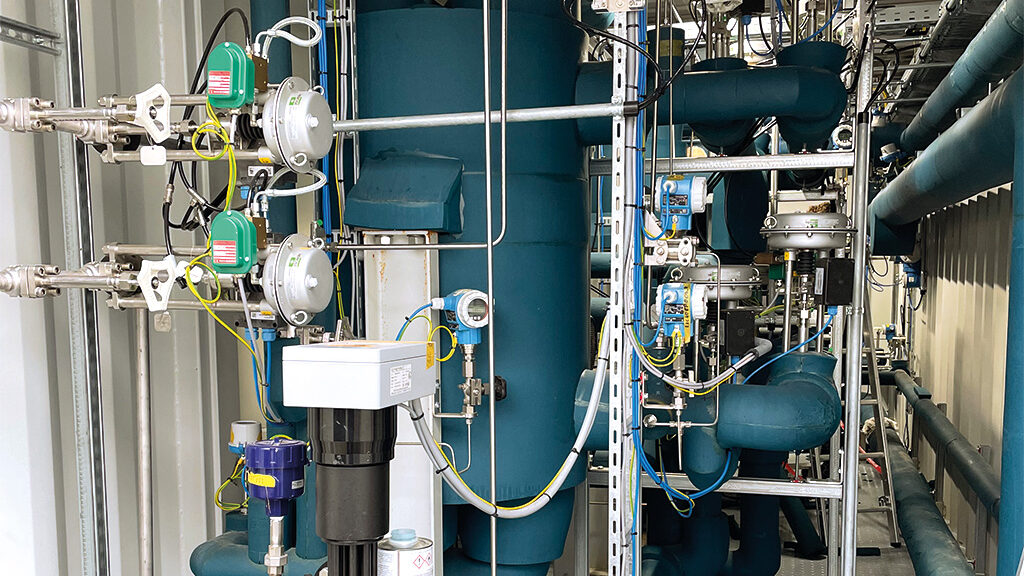
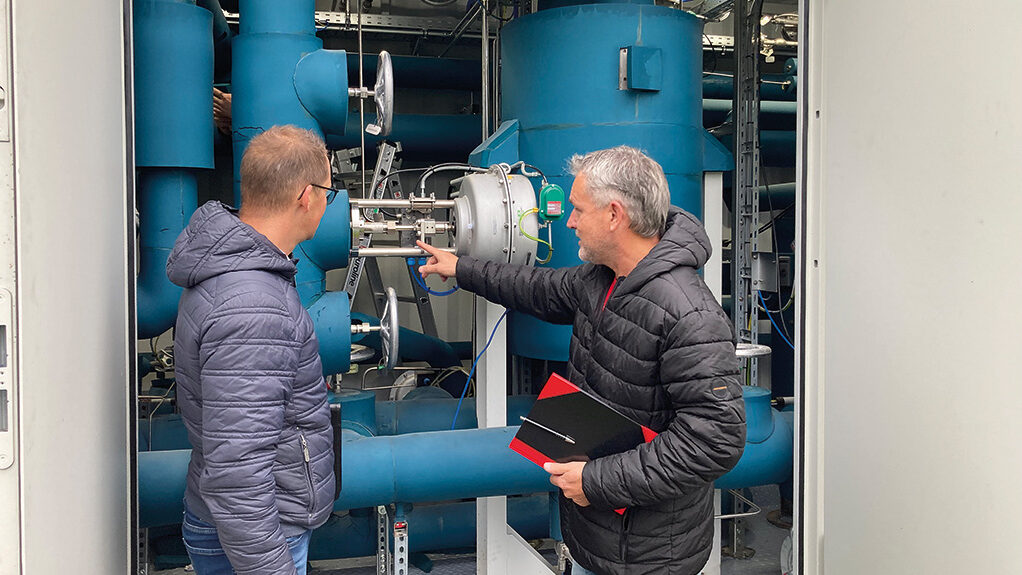
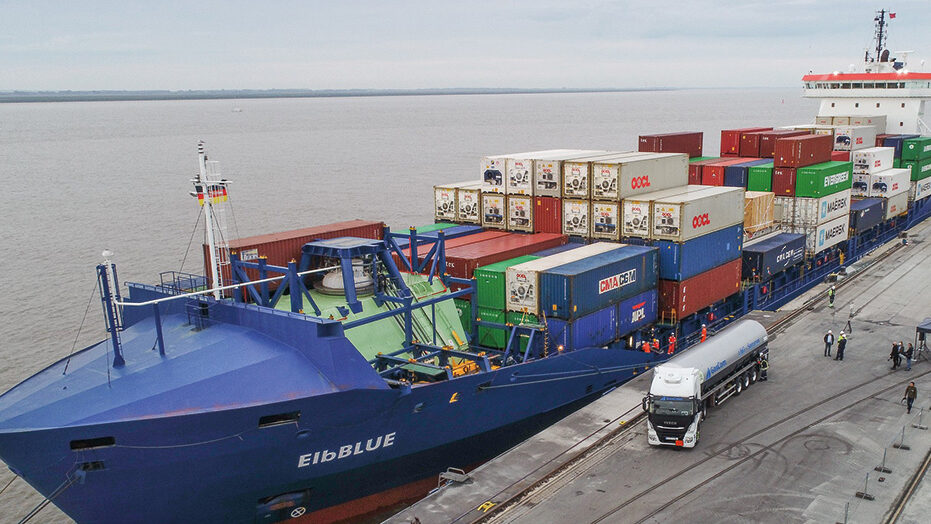
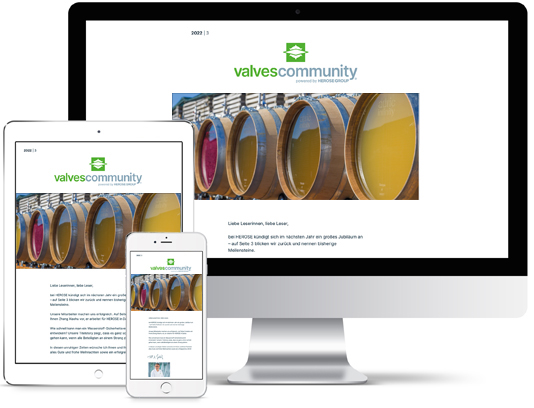 Read the current digital customer magazine now!
Read the current digital customer magazine now!
